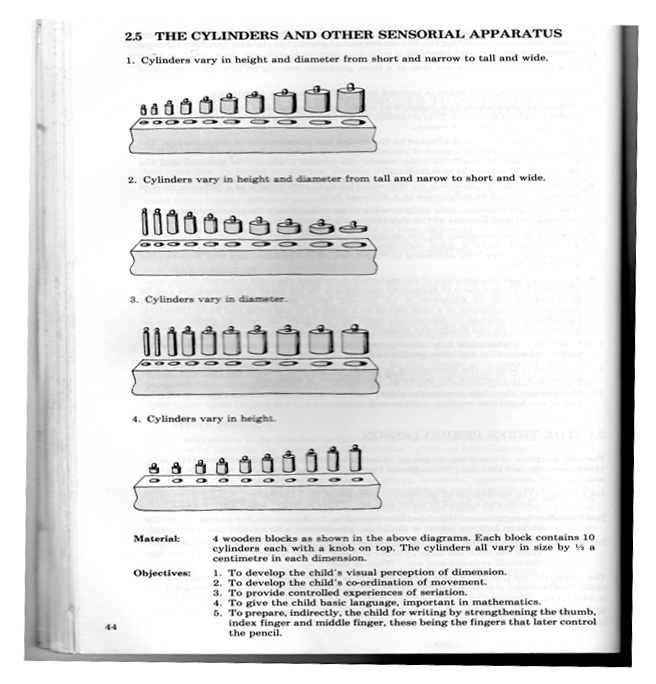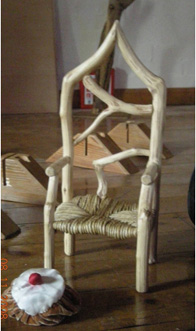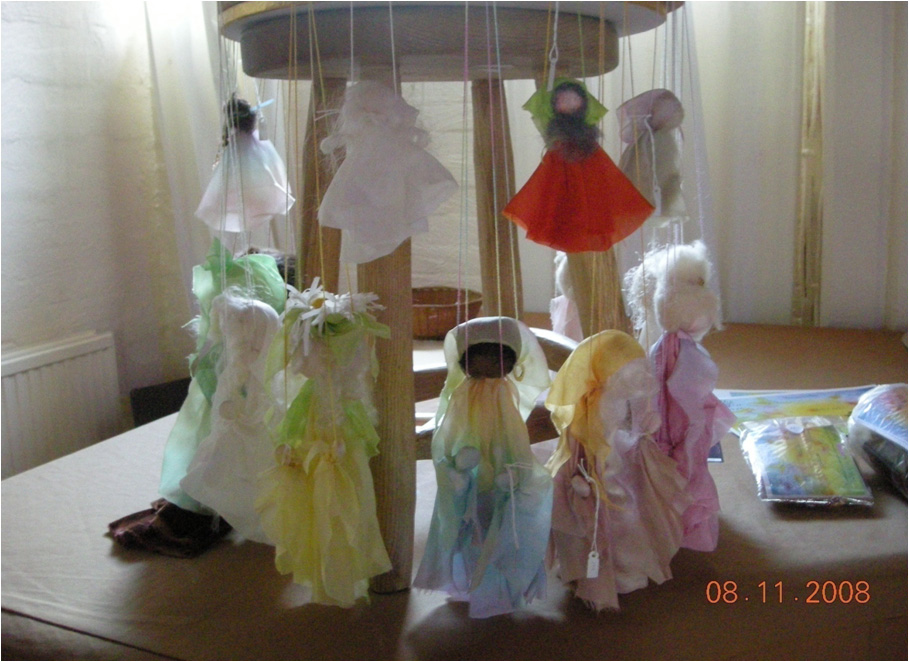Rudolf Steiner Born Austria / Hungary Border 1861 – 1925
- A ‘typical country boy’ whose father was the village stationmaster.
- At 18 attended Technical University Vienna
- Interested in Goethe’s: theory of colour; the interplay between the material and spiritual worlds.
- 1884-1890 Outstanding success tutoring Otto, ineducable due to his hydrocephalic condition.
- 1913 Designs and builds the Goetheanum building and initiates the Steiner Anthroposophical Society.
- 1914 Organises a school for children at the cigarette factory in Stuttgart.
- 1919 Steiner was lecturing intensively throughout the continent on issues based on his ‘three fold social order’ and ‘cultural deprivation’.
Maria Montessori Born in Ancona, Italy. 1870 -1952
- First girl to attended a ‘boys technical school’ and become an engineer.
- In 1896: first woman in Italy to qualify as a Doctor of Medicine.
- In 1899-1901: director of the Orthophrenic school for ‘mentally disabled children’.
- Montessori studied the work of Jean Itard’s and Edouard Seguin,
- 1904 was appointed Professor of Pedagogic Anthropology at Rome University
- In 1906: Casa dei Bambini a school for fifty children from the San Lorenzo slum in Rome.
- Later classroom with a glass wall at the International Exposition in San Francisco. Montessori schools and societies in USA, Europe and India.
Freedom to play - child directed learning
- Motivation Perception
- Creative activity Comprehension
- Curiosity Memory
- Exploration & experimentation
- Social interaction
- Concentration (focus and attention)
- Perseverance (repetition and patience)
- Intellectual interest (curiosity and investigation)
- knowledge (zealous conservation of all objects)
- Aspiration to know, love and serve.
(Montessori, 1988: 197-201)
MONTESSORI objectives
- Love of order
- Love of work
- Attachment to reality
- Love of silence and working alone
- Obedience
- A power to act from real choice
- Independence and initiative
- Self-discipline
- Joy
- Cooperation with peers
Riley’s description of Montessori objectives (Riley,2003:21-22)
STEINER ethos
- Love of nature and aesthetic creativity
- Love of purposeful activity
- Attachment to pattern and rhythm
- Love of singing, music and movement
- Loyalty and desire to please
- A power to act from personal choice
- Self-directed learning through play
- Self-discipline
- Passion for creativity
- Learning together
The aesthetic need for beauty, order, symmetry, and completion. ’It appears only in some mature individuals, but is frequently seen in healthy children.’ (Bernard,1965:243 Citing Maslow’s ‘order of needs’6th)
Love of order
Montessori describes the young child’s need for order and stability as a genuine necessity because he is ‘constructing himself out of the elements of the environment‘
The child ‘is striving incessantly to bring this bewildering universe, as he knows it, into some sort of order’ (Standing,1962:126 (Montessori,1966:41;L.M.C,1982:13-14)
Love of nature and aesthetics
Biodynamic gardening, growing and harvesting activities.
Natural environments nurture the child’s soul and spirit.
....when stating that we wish to educate the heart of the child and not only his intellect , we should ask ourselves how best we can meet this challenge.(Steiner,1988:24)
‘The law of nature is order and when order comes of itself, we know that we have re- entered the order of the universe.’ (Montessori,1998:261)


Love of work
Young children have critical learning periods that initiate learning behaviour. Montessori defines these ‘sensitive periods’ as: order; senses; language; walking; small objects; and social aspects of life.
Successful completion of tasks will normalise a child’s powers of concentration, intelligence and self-discipline during this early formative period.
This love for his environment makes the child treat it with great care and handle everything in it with the utmost delicacy.’ (Monssori, 1988:200)

Love of creative activity
Natural rhythms and sensorial experiences from daily life
Inner spiritual forces facilitate that the child’s imitative response is an entirely individual artistic impulses unfolding their own soul activity.
‘The art of education must proceed from life itself and not from abstract scientific thought’ (Steiner, 1988:5)
and we must protect the child from being absorbed too strongly or too rapidly by the outer world.(Steiner,1982:29,46,47)
From approximately 3 to 7, the child is consciously developing optimum levels of physical sensory-motor differentiation, learning through imitation, and an open hearted willingness to please.


‘And so the task of a kindergarten teacher is to adjust work taken from daily life so that it becomes suitable for the children’s play activities.’ (Steiner,1988:81)
Attachment to reality
Unity of the soul and body is expressed through ‘voluntary effort under the conscious direction of the mind‘, which emanates as a ‘perfection that is individual and personal ‘ (Standing,1962:212)
Freedom to choose how, when and with whom they ‘work’ without any directed length of time.
Attachment to pattern and rhythm
A child’s learning is facilitated by the teacher’s presentation of rhythmic activities and routines
The child learns through his sense of feeling which is perceived within the bodies ‘rhythmic system’(Steiner,1982:37)
Providing the opportunity to ‘imitate life in a simple and wholesome way.’ (Steiner,1988:81)
Love of silence and working alone
‘This intellectual possessiveness shows itself when the child is so strongly attracted by his environment that we may almost say he is ‘in love’ with it.’ (Montessori, 1988:200)
Silence predisposes the soul for certain inner experiences. “ You are not the same after the silence as you were before it.”
(Standing, 1962:226)
Love of singing, music, drama movement and dance
Aesthetic and artistic experiences appear to be strongly influenced by the social aspects of music making, singing and live storytelling and associated theatrical presentation.
Steiner’s ethos is to present an environment that nourishes the child’s imagination and nurtures his artistic creativity throughout the curriculum.
Steiner suggests that what comes from the environment inwardly influences ‘the orientation of a person’s thought life’ (Steiner,1988:37)
Bernard presents that when ‘one is most unlovable, he is most in need of love.’(1965:247)
Obedience
The child finds independence through organised learning.
Mutual appreciation and respect between teacher and children
Montessori the teacher the directress. However, this does not imply that she wishes the children to copy her actions or that she is there to correct a child if he does something wrong.
Loyalty and desire to please
The child is entirely given over to subconscious wisdom, has a natural disposition to intuitively comprehend and integrate all his sensory experiences
and naturally absorbs the inherent moral and cultural influences. (Steiner,1988:76)
Mutual admiration and respect for the guardianship role of the teacher
When the teacher can relate to the individual soul nature of each child, she will gain powerful feelings of support ‘for teaching and educating the child lovingly’ and the children will respond with ‘loyal affection and devotion’(Steiner,1982:58 &60).
Child’s describes Steiner’s ethos as ‘Imbue thyself with the power of imagination’.... ‘Have courage for the truth’..and.... ‘Sharpen thy feeling for responsibility of soul.’ (Childs,1995: 61)
A power to act from real choice
Montessori presents that the children should be free to move about and express themselves spontaneously within the classroom throughout the day, and that this helps the children learn ‘active discipline’ through their own inner mastery of themselves.
A power to act from personal choice
Steiner kindergarten teachers focus on a joyful and child centred approach,
where reconceived goals, plans, gains and ideas are secondary to the primary whole hearted celebration of creative living and spontaneous doing;
where control of error has no place beyond practical applications related to the process of play, and learning is a ‘wholly organic’ process. (Steiner,1982:34)
The importance of imitation for the child during the early years. Unlike copying, imitation intrinsically involves the child’s desire to initiate a sensory experience, ‘enacted in deep earnest by the child in its play’ (Steiner,1988:80)
When the child’s freedom can be directed by the teacher’s careful preparation and organisation of the environment
Independence and initiative
Play is a child’s ‘work’
Montessori emphasized the concrete aspects of living and doing.
She provided specialized concrete didactic apparatus with a structural control of error.
This equipment encouraged detailed sensory discrimination of size, shape, colour and shade, smell, sounds, musical tones and semi-tones.
Child-directed learning through play
Play is a natural inborn impulse
The Steiner Kindergarten provides natural and undefined materials which are considered supportive to free play and natural flowing creativity.
Which gives wide experiences and extensive opportunity for personal expression and intuitive exploration; thus expanding the learning experience beyond that which would have been gained by learning to perform a pre-structured activity and engage in consciously organized intellectual thinking.
Self-discipline
‘Without concentration it is the objects about him which possess the child.....But once his attention has been focused, he becomes his own master and can exert control over his world.’
Following the development of concentration comes perseverance when repetition consolidates the child’s ’ability to carry through what he has begun.’ (Montessori,1988:197-198.)
Self-discipline
Steiner presents that it is the enactment of the child’s will rather than intellect that formulates the child’s early learning.
Steiner suggests there is minimal need for correction at this age
because the children’s own desires and sense of aesthetic appreciation will facilitate assessment of results and of rhythms of routine, order and tidiness.
Both Montessori and Steiner encourage that boundaries should be presented in a way that is perceived as helpful to all rather than disciplinary action focused on a specific individual and/or their chosen activity.
Such that the abstract can be expressed and the concrete can be felt.
Joy
With the freedom to follow his own inner forces, the child will focus his attention not on things themselves, but on ‘the knowledge he derives from them.......
..... the child does not act from logic, he acts by nature.’ (Montessori, 1988:199)
Passionate enthusiasm
Steiner presents that it is the enactment of the child’s will rather than intellect that formulates the child’s early learning.
‘The child wants to be active simply out of an inborn and natural impulse. Play activity streams outward from within.’(Steiner, 1988:80)
‘.......factors essential for the future development of humankind are bringing to wider consciousness the knowledge that the human being is essentially spiritual in nature, and as such has spiritual needs,’ (Childs,1995:34)
Bernard when citing Maslow presents that ‘...when pupils feel that they are part of a group, desirable and purposeful learning activities are facilitated.’ (Bernard,1965:248)
Cooperation with peers
Individuals working together as a team, caring and supporting each other
Montessori suggests that children have a natural ability to relate to social behaviour objectively, together with the virtue of patience and a sense of morality that is founded in their desire for harmony.
Sharing and learning together
A specified group of children sharing as a small community with its own ‘home base’ The child is entirely given over to subconscious wisdom and has a natural disposition to intuitively comprehend and integrate all his sensory experiences and naturally absorbs the inherent moral and cultural influences. (Steiner,1988:76)
Rudolf Steiner Born Austria / Hungary border:1861 – 1925
- A ‘typical country boy’ whose father was the village stationmaster.
- At 18 attended Vienna Technical University
- Interested in Goethe’s: theory of colour; the interplay between the material and spiritual worlds.
- 1884-1890 Outstanding success tutoring Otto, ineducable due to his hydrocephalic condition.
- 1913 Designs and builds the Goetheanum building and initiates the Steiner Anthroposophical Society.
- 1914 Organises a school for children at the cigarette factory in Stuttgart.
- 1919 Steiner was lecturing intensively throughout the continent on issues based on his ‘three fold social order’ and ‘cultural deprivation’.
Maria Montessori Born in Ancona, Italy.: 1870 -1952
- First girl to attended a ‘boys technical school’ and become an engineer.
- In 1896: first woman in Italy to qualify as a Doctor of Medicine.
- In 1899-1901: director of the Orthophrenic school for ‘mentally disabled children’.
- Montessori studied the work of Jean Itard’s and Edouard Seguin,
- 1904 was appointed Professor of Pedagogic Anthropology at Rome University
- In 1906: Casa dei Bambini a school for fifty children from the San Lorenzo slum in Rome.
- Later classroom with a glass wall at the International Exposition in San Francisco.
- Montessori schools and societies in USA, Europe and India.
